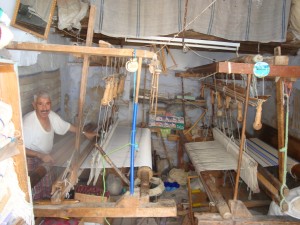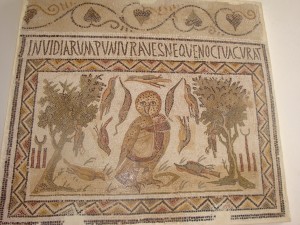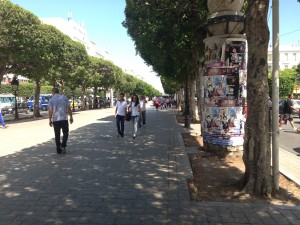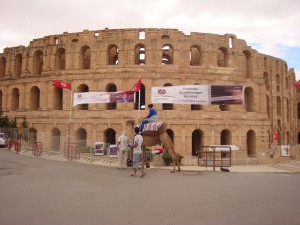CULTURE
Culture
Tunisia’s cultural heritage has many attractive facets…
Cultural icons
Archeological sites from Phoenician to Roman, Byzantine, Arabic, Ottoman and European; médinas, mosques; long-lived arts and popular traditions; artistic events; craft industry; music and songs of the traditional and popular registers.
Tunisia has as many sites declared humanity inheritance as Greece.
Our People
A synthesis of various civilizations, Carthage and Rome to mention only the most prestigious ones, Tunisia has always been distinguished by intense cultural activity.
Berber, Arab, African and European influences have shaped the Tunisian cultural identity.
Although Islam is prevailing, all other great religions coexist peacefully in Tunisia. Jewish and Christian communities freely observe their rites and contribute to enriching the diversity of the Tunisian culture.
Warm and hospitable, Tunisians are always available and ready to lend a hand.
Our Music
Tunisian music is very diverse and has been influenced by Andalusian, Turkish and Arabic rhythms. Arabic classical music, Malouf can be heard in the old palaces or in cafes in the street while classical music resounds in the St Louis cathedral of Carthage converted into the Acropolium or in the Roman coliseum of El Djem.
In Sidi Bou Said, you can hear the creation of contemporary Tunisian masters while in Tabarka during the festival, you can enjoy jazz and music of the world.
Our National Costumes
In most Tunisian regions, women’s costumes are largely varied and highly refined. Weaving and embroidery vary from one region to another. The used fabrics are adapted to needs and circumstances (brocade, silk, velvet, wool, cotton and linen).
Our Architecture
Tunisian cities, both old and new have been built with many unique styles of architecture. Tunis has since long been famous for its beautiful gates and windows. While the houses might be simple and minimalistic, wealth was centered to the workmanship of these wooden elelements.
The dominating colours for doors are blue and beige, while windows are dominated by blue.
Our Handicrafts
Copper, wool, ceramics, jewelry and leather are the basic materials of Tunisian handicrafts. Chrome plated copper and bronze are used to produce different wares including pestles, candelabras and saber’s handles. Tunisian carpets are quality handicrafts. Different types of high pile carpets are available including the Berber gatifa carpet, the mergoum widely used in central and southern Tunisia and the alloucha traditionally manufactured in Kairouan.
Working with clay is highly developed in the Cap Bon area in particular.

Our Festivals
A Festival is the expression of cultural inheritance. It used to accompany certain events of life such as marriages or religious celebrations. Today, it aims at developing Tunisian’ cultural assets and national and regional identities.
There are forty festivals in the country mainly in the summer time. Each festival has a dimension or a set themes such as handicrafts, theatre, symphonic music
The most significant festivals are: the international Festival of Carthage, the international festival of Hammamet, both in July and August, the cinematographic and theatrical days of Carthage in October , the Festival of the médina of Tunis during Ramadan, the Jazz Festival of Tabarka in July, the symphonic Festival of music of El Djem in August, the international Festival of the Sahara in Douz in December, the Festival of the horse in Sidi Bouzid in June, the international Festival of the oases in Tozeur in November, the Festival of Ksours in Tataouine in April, the hawking Festival of El Haouaria in June, the Festival of Ulysse in Djerba, the Festival of the oases of mountain in Tamerza in March…
Festivals reveal facets of the personality of the area or country.They constitute great cultural events.
Movies filmed in Tunisia
Tunisia constitutes an ideal set for shooting movies. Its assets are before all the stability and the safety of the people and the goods but also the softness of the climate, the blue sky and natural light of exceptional quality. The topography of the country between the Mediterranean and the Sahara creates a great diversity of landscapes, and strongly contrasted worlds.
One of the most appreciated spaces is the amazing extent of the Sahara. In Anthony Minghella’s movie, the English Patient, the film with the nine Oscars, one of the “actors” which bursts the screen is very much the desert. Among foreign films made to Tunisia, one can quote a great number of successes: The English Patient of Anthony Minghella, Star Wars of George Lucas, Indiana Jones of Steven Spielberg.







